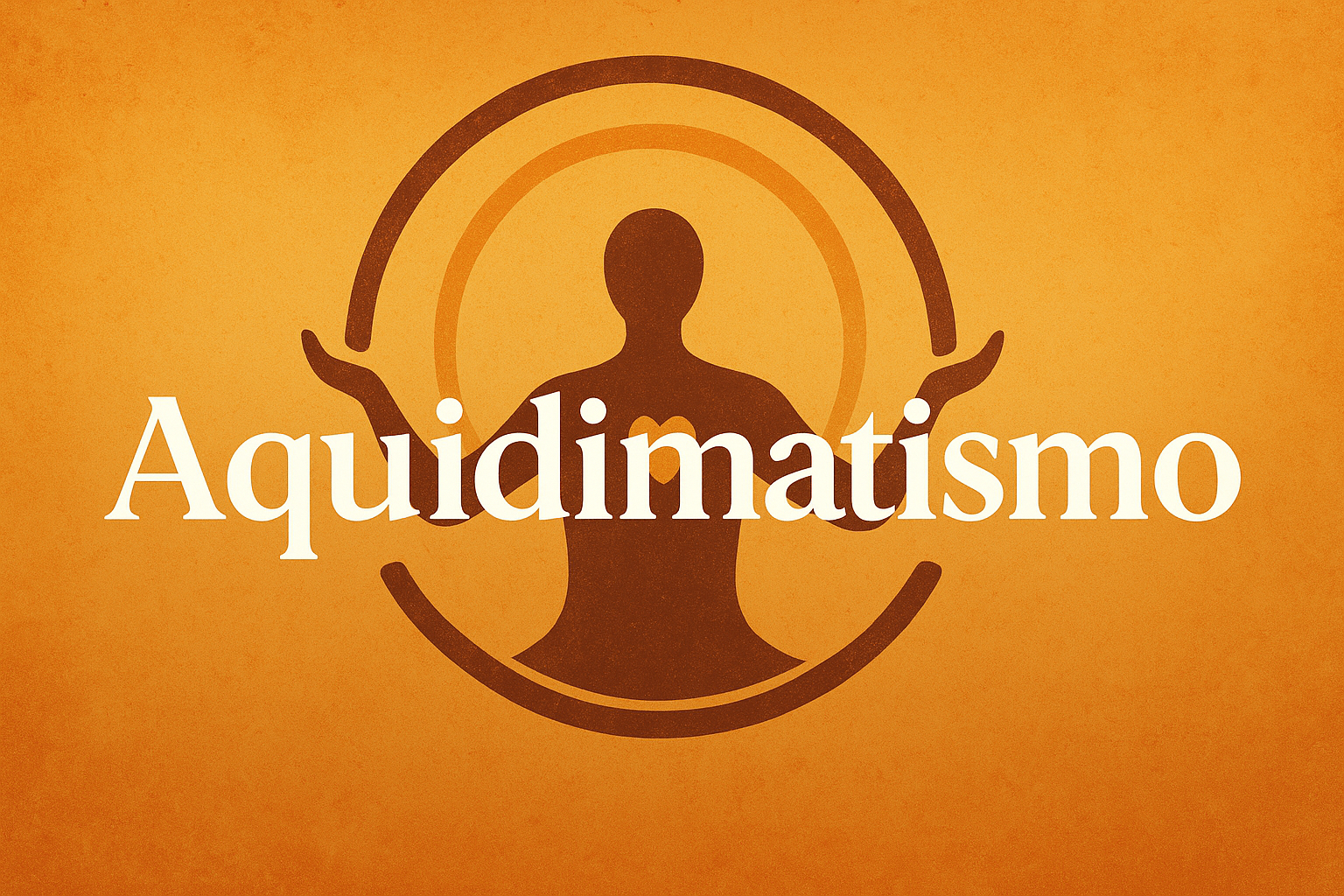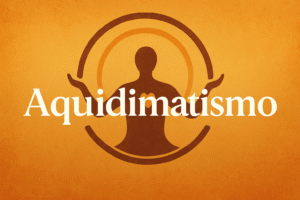

Aquidimatismo: 10 Life-Changing Lessons That Will Inspire Your Growth
Introduction: Understanding the Meaning of Aquidimatismo
In a world filled with chaos, stress, and over-stimulation, the term Aquidimatismo has emerged as a symbol of balance and inner alignment. Rooted in the idea that true growth happens when we find equilibrium between our emotions, ambitions, and surroundings, Aquidimatismo encourages individuals to live consciously. It’s not just a word—it’s a philosophy of harmony that can be applied to personal development, leadership, creativity, and even business.
The essence of Aquidimatismo lies in understanding that every action has an emotional and energetic impact. By aligning our decisions with empathy, reason, and authenticity, we create a ripple effect of positivity. Think of it as an art form—balancing thought and feeling, logic and intuition, ambition and gratitude. As modern life becomes more digitized and disconnected, Aquidimatismo provides a path back to emotional intelligence and mindful purpose.
People drawn to this philosophy often seek mental clarity, emotional freedom, and spiritual balance. Aquidimatismo is not confined to religion or culture—it’s a mindset available to anyone who wishes to thrive in today’s fast-changing world without losing their sense of self.
The Origins of Aquidimatismo: From Concept to Global Movement
The roots of Aquidimatismo can be traced to philosophical studies that bridge Eastern mindfulness and Western rationalism. The term itself combines “aqui” (meaning here and now) with “dimatismo” (symbolizing dynamic balance). Together, they represent the art of being dynamically present—constantly adapting while maintaining inner peace.
Early thinkers behind Aquidimatismo proposed that modern humans have lost the ability to be present without control. The rise of technology, competition, and social pressure created a world where people chase success but lose serenity. Aquidimatismo counters this trend by teaching presence with purpose.
The concept gained traction in leadership circles, creative industries, and self-development communities. It was seen as a bridge between philosophy and practice—not just a theory, but a living system that guides decision-making. Over time, Aquidimatismo evolved into a mindset for personal, corporate, and societal transformation. The idea is simple yet profound: when individuals balance thought, emotion, and action, they generate collective harmony that elevates entire communities.
The Core Principles of Aquidimatismo
Aquidimatismo is built on five guiding principles, which form its philosophical core:
-
Presence: Living fully in each moment.
-
Balance: Managing emotion, reason, and energy in harmony.
-
Connection: Cultivating empathy and genuine relationships.
-
Purpose: Acting with clarity and moral integrity.
-
Transformation: Embracing change as a natural process of evolution.
Each principle reinforces the others. Presence allows awareness; balance sustains peace; connection gives meaning; purpose drives direction; transformation ensures growth. This framework can be applied to leadership, relationships, art, and even business.
What makes Aquidimatismo stand out is its adaptability. It’s not rigid like a dogma—it’s fluid, just like human nature. It encourages us to remain grounded yet curious, stable yet creative. Whether you’re making a career decision or resolving a conflict, the Aquidimatismo mindset teaches you to observe, reflect, and respond rather than react impulsively. That’s where true power lies—in conscious control, not domination.
Aquidimatismo in Personal Growth and Self-Discovery
When applied to personal development, Aquidimatismo becomes a transformational path. It encourages people to examine their thoughts, emotions, and behaviors without judgment. By observing yourself through this lens, you begin to identify patterns that either drain or strengthen your energy.
In this journey, self-awareness becomes your compass. Aquidimatismo teaches that growth is not about perfection but about authentic evolution—making progress while staying kind to yourself. This approach dismantles toxic productivity and replaces it with purpose-driven action. Instead of chasing external validation, practitioners of Aquidimatismo focus on internal fulfillment and emotional freedom.
Practical steps include mindfulness exercises, journaling, reflective dialogue, and daily rituals of gratitude. By integrating these habits, you gradually build resilience, patience, and joy. The philosophy views challenges as lessons, not obstacles. Every hardship becomes an opportunity to practice balance and adaptability—the two pillars of Aquidimatismo.
Aquidimatismo in Leadership and Business
Leadership today requires more than intelligence—it requires emotional depth and ethical vision. The Aquidimatismo leadership model introduces a new kind of leader: one who leads through balance, not dominance.
In a corporate world driven by metrics, Aquidimatismo injects humanity into management. It encourages leaders to balance profits with purpose, strategy with empathy, and efficiency with innovation. Such leaders build trust, reduce burnout, and inspire teams through example rather than pressure.
Businesses that adopt this mindset experience sustainable growth. They attract loyal customers and motivated employees because their values are genuine. Through Aquidimatismo, leadership evolves into a collective practice—an ecosystem where everyone contributes to harmony and success. This philosophy redefines capitalism itself by introducing conscious capitalism: success that benefits both people and planet.

The Role of Creativity in Aquidimatismo
Creativity lies at the heart of Aquidimatismo. It teaches that every human being is inherently creative—creativity is not limited to artists but extends to thinkers, builders, and innovators.
The philosophy proposes that creativity flourishes when the mind is calm and the heart is open. When balance exists between structure and spontaneity, true inspiration flows.
In practical terms, creative professionals can use Aquidimatismo to overcome burnout and creative blocks. By practicing mindfulness and emotional alignment, they rediscover the joy of creation, not just the pursuit of results. For organizations, integrating Aquidimatismo into their creative culture encourages collaboration, experimentation, and innovation.
This approach transforms creativity from chaos to flow—from stress to inspiration. It’s about creating from wholeness, not desperation.
Emotional Intelligence and Aquidimatismo
At its essence, Aquidimatismo is emotional intelligence in action. It’s the ability to manage emotions wisely and build relationships that nourish rather than drain you.
In personal and professional life, emotional intelligence determines how we respond to challenges. Aquidimatismo refines this ability by adding an extra dimension—spiritual awareness. It reminds us that emotions are not enemies but messengers guiding us toward growth.
By practicing self-awareness and empathy, we reduce emotional reactivity. Conflicts become opportunities for connection. Anxiety turns into curiosity. Through this process, we gain control over our inner world without suppressing it. The result is a balanced emotional ecosystem—the foundation of mental health and harmonious living.
Mebalovo Business: 10 Powerful Strategies Transforming Modern
Aquidimatismo and Society: Building Compassionate Communities
Aquidimatismo isn’t just personal—it’s social. When individuals live in alignment, they naturally influence their surroundings. Families become healthier, workplaces become kinder, and communities more cooperative.
At the societal level, Aquidimatismo encourages policies and practices based on human well-being, equality, and sustainability. It promotes education systems that nurture emotional intelligence, not just academic performance. It inspires leaders to govern through inclusion and transparency.
Imagine communities where empathy replaces judgment, and compassion drives collaboration. That’s the world Aquidimatismo envisions—a society where humanity thrives because balance, awareness, and purpose are collective values.
The Challenges of Practicing Aquidimatismo
Like any discipline, Aquidimatismo has its challenges. Maintaining balance in a chaotic world requires practice and patience. People often struggle with consistency—they may understand the principles but fall back into old habits when life gets hard.
Common obstacles include overthinking, emotional overload, digital distractions, and societal pressure to compete rather than connect.
Aquidimatismo doesn’t demand perfection; it invites continuous recalibration. Every setback becomes a signal to slow down, breathe, and realign.
Another challenge is skepticism—some people mistake it for abstract spirituality or self-help fluff. In truth, Aquidimatismo is deeply practical. It provides tools for real-world resilience—something we all need in times of uncertainty and change.
The Future of Aquidimatismo: A Path Toward Global Harmony
The future of Aquidimatismo looks promising. As mental health, sustainability, and emotional awareness become global priorities, this philosophy offers a framework that connects them all.
Education systems can adopt it to teach emotional literacy; businesses can apply it for ethical leadership; individuals can live it for personal peace.
We’re entering an era where intelligence alone isn’t enough—consciousness is the new currency. Aquidimatismo stands as a guide for this new humanity. It teaches us that balance is strength, empathy is wisdom, and presence is power.
If practiced collectively, Aquidimatismo could become a cornerstone for a more peaceful, creative, and cooperative world—a world where progress doesn’t destroy balance, but enhances it.
Conclusion
Aquidimatismo isn’t just an idea—it’s a movement toward conscious living. It invites us to live fully, lead wisely, create fearlessly, and connect deeply.
Whether applied in personal growth, art, or business, its message remains the same: true power comes from balance.
Through Aquidimatismo, humanity has a chance to rediscover what truly matters—peace, purpose, and presence.













